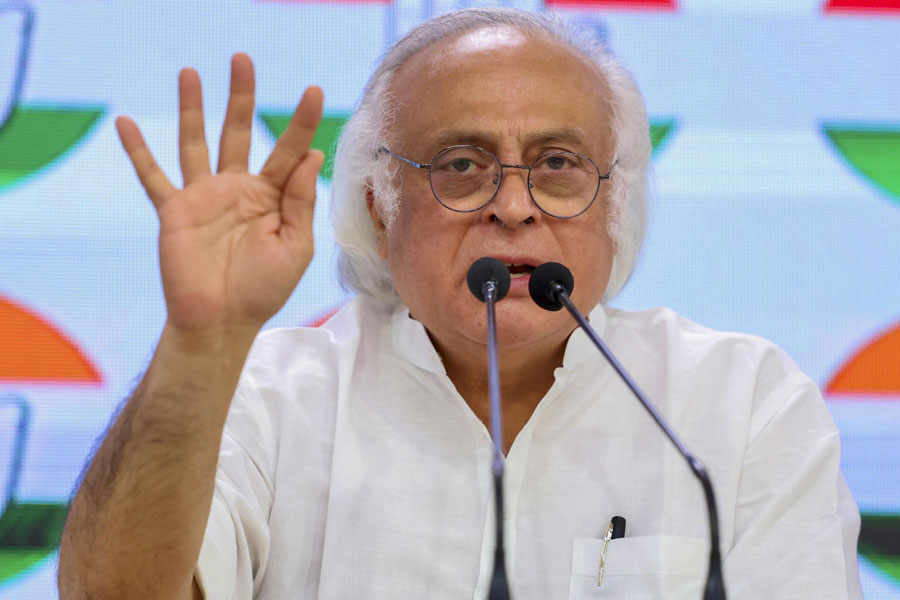 |
Your knee hurts. So you go for an X-ray. Your stomach has been paining for a while. The doctor prescribes an ultrasound test. Your lower back has been giving you trouble. You are asked to undergo a full body scan.
Sounds familiar? Across India, patients have been prescribed tests that help doctors zero in on an ailment. What’s not known is that these tests may well be adding to your health problems.
According to some analysts, 60-70 per cent of medical treatment in India today is based on diagnostic laboratory tests. Not surprisingly, this is one of the most promising sectors in healthcare. A poll conducted in India among private equity and venture capital companies by research group Venture Intelligence in 2009 found that the most attractive sector for investment in the healthcare industry was diagnostic services, followed by medical devices and equipment.
There are many reasons why doctors advise a battery of tests. Most do so because they want to rule out ailments. How, for instance, can one get to the bottom of a bone problem unless a series of tests — from X-ray to body scan — is done?
“Doctors want to practise evidence-based medicine and that is the reason they ask for more tests before arriving at a diagnosis,” explains Deepak Kumar Mishra, head, department of laboratory haematology and laboratory sciences, Tata Medical Center, Calcutta. “In the process many unwanted tests are asked for,” adds Mishra, who is also the honorary secretary of the Indian Association of Pathologists and Microbiologists (IAPM).
But what doctors seldom tell their patients is the fact that imaging tests such as X-rays, ultrasounds and CT-scans expose patients to unwanted radiation. For instance, procedures such as angioplasty and mammography tests to detect breast cancer make use of high doses of radiation.
“People undergoing interventional procedures like angioplasty receive very high levels of radiation, depending on how long the procedure lasts. In some it even leads to radiation-induced cancer,” warns A.U. Sonawane, who heads the department of radiation safety at the Atomic Energy Regulatory Board (AERB).
With India’s population burgeoning — and the middle class expanding and living longer — laboratories and diagnosis centres are mushrooming across cities and towns. A study by the Confederation of Indian Industry (CII) and consultancy group KPMG, released in 2011, estimates that the Indian healthcare industry is growing by 23 per cent per annum. In value terms, it is projected to hit $77 billion by the end of this year and the diagnostics sector is projected to contribute $2.5 billion to it.
The AERB, which is entrusted with the task of regulating all radiation-related activities, including the use of radiation in medicine, holds that there were 4,000 CT-scan installations in India in March 2012, up from 510 units in December, 2009.
Few patients, however, know about the pitfalls of radiation. “Ionising radiation (which goes into the body during, say, a CT-scan) is potentially harmful in any dose and there is nothing like a perfectly ‘safe dose’,” says Bejoy Thomas, a neuroradiologist at the Sree Chitra Tirunal Institute of Medical Science and Technology, Thiruvananthapuram.
Sporadic studies are now being conducted into issues related to radiation. Indira Chakravarthi, a public health researcher at Jawaharlal Nehru University, New Delhi, who has been studying medical technology, points out that imaging technologies expose the human body to X-rays, ultrasonic waves and magnetic fields. “Contrast agents (chemicals) are injected into the patient to obtain better images. Not only are the immediate and long-term effects of these not given attention, their clinical usefulness in relation to their cost has also not been sufficiently established,” she says.
It is estimated that nearly four billion CT-scans are conducted every year all over the world — 126 scans every second. Considering that each CT-scan delivers 2-10 milliSieverts of radiation (the prescribed dose limit for a person who is not undergoing any radiation-based diagnosis or therapy is 1 milliSievert), a large number of people are subjected to radiation exposure.
Children, of course, are more sensitive to radiation than adults. According to some studies, the risk of children developing radiation-induced cancer is two to three times higher than that of adults. Such overexposure to radiation can also later affect their reproductive abilities.
But what worries experts working in the field of radiation is that a sizeable chunk of instruments in India is either old or not equipped to dispense radiation in the right doses. Newer machines are technologically superior to the older ones, and many of the updated equipment can effectively control radiation dosages.
 |
“My guess is that nearly a third of X-ray machines deployed in the country are more than 15 years old,” says K.S. Parthasarathy, former AERB secretary who is currently a Raja Ramanna emeritus professor at AERB. A team of researchers at the Christian Medical College, Vellore, that surveyed CT-scanners in Tamil Nadu between 2006 and 2008, found that a quarter of the 127 machines they studied were either conventional or refurbished. The study, published in the Journal of Medical Physics last year, says that 40 per cent of the machines didn’t display details of the dose delivered on the CT console, indicating the outdated nature of the device.
In 2004, in an effort aimed at curbing high radiation, AERB brought X-ray machines, CT-scanners and other interventional radiology instruments under radiation safety rules. The regulator subsequently suggested that all states in the country should set up a directorate of radiation safety. Very few came forward.
“Only Kerala and Mizoram have a radiation safety directorate. West Bengal and a few other states are now in the process of setting it up,” says Sonawane.
The radiation problem has been taken up by the Comptroller and Auditor General of India too. In a recent report, it severely criticised AERB for failing to register even 10 per cent of the total X-ray installations in the country. Of an estimated 57,000 X-ray units, only 5,270 are registered with the AERB.
The problem is not limited to India — it’s being faced (and tackled) in many parts of the world. The West has already started taking remedial measures. In the US, radiation exposure from CT-scans alone had tripled between 1996 and 2010 and a study had found that nearly a third of medical X-ray tests were unnecessary. Alarmed by the increasing burden of unwanted tests, doctors of nine top medical societies in the US started an initiative in April this year to create awareness among patients. The campaign, Choosing Wisely, highlights 45 tests which are routinely abused.
A few activists are raising their voice in India too. “Though I am doing my bit to educate patients we are yet to see any big initiative,” laments B.M. Hegde, cardiologist and former vice-chancellor, Manipal Universtiy. “Patients don’t understand that routine scans in pregnancies could be of low benefit and may actually present a risk,” adds Chakravarthi.
The situation may improve with the implementation of the Clinical Establishments Act, 2010. A few states such as Uttar Pradesh, Rajasthan, Jharkhand, Mizoram, Himachal Pradesh and Sikkim have already adopted the act, which makes it mandatory for diagnostic centres along with hospitals and nursing centres to maintain certain standards. Once it comes into effect, diagnostic centres and pathological laboratories will be under pressure to deliver accurate reports, hire trained personnel and have proper equipment.
Till then, the mayhem continues. And some doctors’ gains will end up as quite a few patients’ loss.











